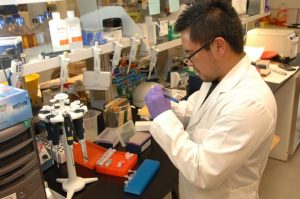What Every Pharmaceutical Quality Manager Needs to Know
Many pharmaceutical companies today are writing very elaborate protocols for calibration in order to comply with the cGMP guidelines put forward by the FDA. Not only is it important to have these protocols on paper, the company must also put them into practice in order to maintain product quality.

Calibration is the process in which measurements on a device are compared against those of a standard or reference instrument in order to check the device’s limits, accuracy and precision. This is important because with repeated use over time, the precision and accuracy of a device usually drift. The device must be maintained and serviced on a regular basis if it is to perform at the required pharmacy manufacturing standards.
If the validation process you have in place is to meet pharmaceutical quality standards as set by the FDA, you will have to make sure that you have kept accurate documentary evidence that demonstrates that you have used procedures and processes in both production and testing that have maintained the stipulated compliance levels at every stage.
2900 calibrations are carried out every month in a New Jersey Pharmaceutical site. 500 of those are usually found to have failed and demand immediate attention. The other 2400 are scheduled, based on the written protocols, and of these 400 are found to be out of calibration. It is therefore important to make sure that you carry out good manufacturing practices so that you can detect these problems before they affect the quality of your product.
5 Guidelines for Instrument and Calibration Sourcing
1. Best Practice Laboratories:
Usually when you purchase a monitoring instrument, it will be pre-calibrated and will arrive with a certificate to that effect. However, in order to get devices that are reliable and accurate, you need to order them from a manufacturer who is keen on calibration best practice. You need to find out if they are accredited and if they adhere to ISO 17025 standards. These are standards that were introduced in the year 1999 for instrument calibration facilities. When a lab is accredited, its competence has been confirmed as well as the fact that it adheres to a quality system that is documented.
2. Improve the Accuracy of the Instrument:
You also need to make sure that you purchase accurate monitoring instruments. A laboratory may work to calibrate and instrument, but the instrument itself has performance limits that are inherent. If the instrument has an accuracy of plus or minus 1°C the calibration at the very best laboratory will still have an uncertainty of plus or minus 0.02°C. As such, even the very best calibration services will not be able to make any improvements on the specifications that the instrument itself has.
3. Instrument Calibrated by NIST:
NIST stands for the National Institute of Standards and Technology. Many times when people are making an instrument purchase they want to know if the instrument can be traced back to NIST. Unfortunately, just because an instrument is NIST traceable does not reveal how it will perform. There is absolutely no relation to the accuracy of the instrument.
4. Calibration should Incorporate Test Points:
When it comes to calibrations, the test points incorporated should be a reflection of the various parameters that you are expecting the instrument to measure. This will prove its performance definitively. It is important, when you are dealing with industry regulators, to be able to show them that you tested the instrument across the entire range of operating conditions that it is expected to operate in.
5. Accurate Data:
Interestingly, there are manufacturers of monitoring instruments who will refuse to disclose how long they expect their instrument to remain in calibration before it needs to be re-calibrated. Without this information, this instrument may end up being a wildcard that will adversely affect your system. When the time to re-calibrate comes and you are without any specification, you may find yourself with a problem. Even though with time all instrument sensors tend to drift, a manufacturer should be able to tell you what the accuracy of his instrument will be 6 months to a year from the time you start using it.
When it comes to managing quality, instrument calibration is something that must be taken quite seriously. Your calibration processes are integral in making your quality system work the way it is meant to. Your calibration program should address the following in order to guarantee a great validation process:
- Measurement range
- Monitoring instrument stability
- Monitoring instrument accuracy
Using calibration best practices you will be able to avoid compromising the quality of your products as well as incurring considerable financial losses. Knowing just how stable your measuring system is over time will help to prevent accidental consequences when your documentation is finally reviewed by a customer or the FDA in an audit.









